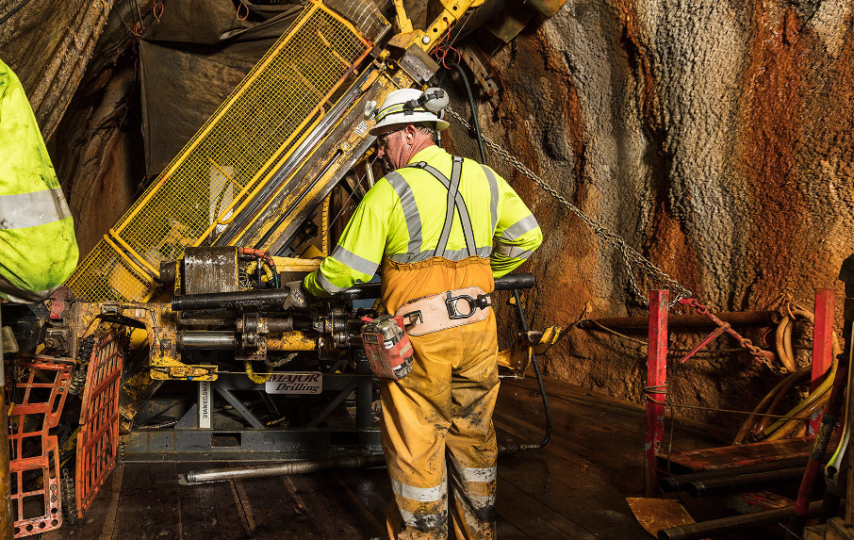Introduction
Diamond drilling, a technique synonymous with precision and depth, stands as a stalwart against the complexities of some of the most challenging terrains.
From unpredictable geological formations to the unforgiving grasp of harsh environmental conditions, diamond drilling is tasked with overcoming obstacles that demand ingenuity, adaptability, and expertise.
In this blog, we will discuss the world of diamond drilling in the face of complexity. With our spotlight firmly fixed on the challenges of intricate environments, we delve into the strategies, tools, and ingenious solutions that have evolved to conquer these hurdles.
As we navigate the complex landscape of drilling scenarios, we’ll explore how innovation and experience intertwine to carve a path forward, transcending barriers that once seemed impossible.
Top 5 Challenges in Diamond Drilling
Diamond drilling emerges as a remarkable technique, delving deep into the Earth’s crust with astonishing accuracy. Yet, with its remarkable feats lies an intricate complication of challenges, each threading a unique narrative of complexity and resilience. Let’s discuss the top five challenges for diamond drilling and its solution.
- Unpredictable Geological Formations
- Precision Tools and Techniques for Navigating Complex Geology
Addressing the challenge of unpredictable geological formations in diamond drilling requires implementing precision tools and techniques tailored to handle such complexities.
Geological formations can vary significantly in hardness, composition, and structure, leading to uncertain drilling conditions. The diamond drilling industry relies on cutting-edge solutions that enhance efficiency, accuracy, and safety to tackle this.
One fundamental solution involves using advanced drill bits and diamond impregnation techniques. These modern drill bits incorporate state-of-the-art cutting technologies and strategically placed diamond impregnation to withstand the abrasive nature of various rock types. This ensures prolonged bit lifespan and efficient penetration through challenging formations.
Precision tools and techniques are the cornerstones of overcoming the unpredictable geological formations encountered in diamond drilling. Drilling operations can navigate complex geology efficiently and safely by utilising advanced drill bits, real-time data collection, core orientation systems, hydraulic pressure control, and continuous monitoring.
- Access Constraints in Remote Locations
- Portable and Modular Equipment for Conquering Inaccessible Sites
Diamond drilling often faces the challenge of access constraints when operating in remote and difficult-to-reach locations. These sites might be located in rugged terrains, dense forests, or isolated areas, making transporting and setting up traditional drilling equipment challenging.
In such scenarios, the solution lies in using portable and modular equipment to tackle the logistical hurdles of working in inaccessible sites.
Portable drilling rigs and equipment are a fundamental aspect of addressing access constraints. These rigs are designed to be compact, lightweight, and easy to transport.
They can be disassembled into smaller components that can be carried or transported via vehicles, helicopters, or manpower, allowing them to reach remote sites that conventional equipment cannot access.
Modular equipment systems further enhance adaptability. These systems have interchangeable components that can be quickly assembled on-site, reducing the need for extensive setup time.
- Handling Unstable Ground Conditions
- Monitoring and Adaptive Strategies for Ground Stability
Dealing with unstable ground conditions is a significant challenge in diamond drilling operations, especially when encountering geological formations prone to collapsing, shifting, or unexpected changes.
To effectively navigate these conditions, implementing monitoring and adaptive strategies is crucial for maintaining drilling efficiency, equipment safety, and the integrity of core samples.
Monitoring the ground conditions in real-time is a pivotal solution.
Advanced sensors and geotechnical instruments are utilised to continuously assess the surrounding rock and soil’s stability. These sensors provide data on factors such as ground movement, pressure changes, and shifts in geological structures.
By collecting and analysing this data, drilling operators can anticipate potential instability and adjust drilling parameters accordingly.
Adaptive drilling strategies are another essential approach. When unstable ground conditions are detected, operators can modify drilling techniques to accommodate the challenges.
- Extreme Depths and High-Pressure Environments
- Specialised Equipment to Navigate the Depths
Diamond drilling encounters the challenge of extreme depths and high-pressure environments when exploring resources deep beneath the Earth’s surface.
These conditions demand specialised equipment and strategies to ensure operational success and personnel safety. To conquer these challenges, the diamond drilling industry relies on innovative technologies and robust equipment designed to withstand the rigours of extreme depths.
One crucial solution involves using advanced drilling rigs specifically engineered for deep drilling. These rigs are equipped with reinforced components and heavy-duty materials capable of enduring the pressure exerted by the surrounding rock and the depth of the borehole.
Reinforced drilling rods, casing systems, and hydraulic mechanisms are integrated into these rigs to maintain stability and functionality under extreme conditions.
To address the issue of high-pressure environments, specialised drilling fluids are employed. These fluids, known as drilling muds, are formulated to exert controlled pressure on the borehole walls, preventing collapses and maintaining stability.
- Balancing Efficiency and Environmental Management
- Sustainable Practices for Navigating Complexity’s Impacts
Balancing efficiency and environmental management is a critical challenge in diamond drilling, where the extraction of valuable resources must be achieved while minimising the ecological footprint.
Achieving this delicate balance requires the implementation of sustainable practices that address the complexities of efficient resource extraction and responsible environmental stewardship.
One key solution is adopting advanced drilling technologies designed to optimise efficiency while minimising environmental impact.
Innovations such as directional drilling and multi-target drilling allow for the extraction of resources from multiple angles and locations using a single borehole. This reduces the need for multiple drilling sites, minimising surface disturbance and habitat disruption.
Drilling companies are increasingly using water-based drilling fluids rather than oil-based ones. Water-based fluids are more environmentally friendly and have lower toxicity and biodegradability. This change reduces the potential for harm to surrounding ecosystems and ensures a more sustainable waste disposal process.
Conclusion
As we’ve delved into the depths of these challenges, one pioneering name consistently emerges—Cadrillers. Their commitment to pushing the boundaries of conventional drilling practices shines through their innovative approach.
From sophisticated drill bit designs adept at manoeuvring through complex geological structures to real-time data collection mechanisms facilitating precise decision-making, Cadrillers exemplifies the power of precision tools and techniques to redefine the industry’s landscape.








